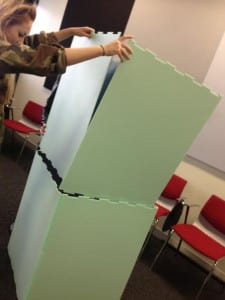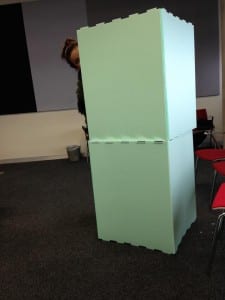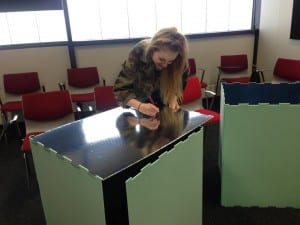In todays workshop, our group put into practise our ideas on the structure and timing of our piece. The opening section of our performance will consist of us going about our daily routine, of waking up, brushing our teeth, washing our face and eating breakfast. We have chosen a simple movement that represents each of these acts, however we are doing each action for 15 minutes. This will dehumanise a simple every day action, and the audience will not be expecting us to maintain such simple movements over a durational period. As we are going to be using our bodies to portray an action, and due to the duration of our piece, it is important to research into physical theatre and mime traditions. Simon Murray and John Keefe write:
‘the physical actions of the body still remain those of the everyday body. These may be stylised or contorted or otherwise heightened but the body remains the same somatic, corporeal ‘thing’ that it can only be. The actions are mimetic of the everyday but outside the everyday or habitual.’
(Murray Simon, Keefe John, Physical Theatres: A Critical Introduction,Taylor and Francis 2007)
The reason we have chosen to mime is because we feel that it fits more with the aesthetics of the space. We can’t justify having real props such as toothbrushes and doing it for real, because it would too out of place. During the sections when we mime eating, the reason for us not having real plates and cutlery is that the Gallery is filled with household crockery. They are meant for practical use but they are kept behind glass for display only. Our mime is demonstrating the essence of the action we are portraying without the materialistic element, because the material objects are prevented from our use by the glass cabinets in the Gallery.
So would our mime work and would it be effective? The only way to find out was to practically do it.
With each of us focusing and remaining in silence, with only the sound of a ticking clock to accompany us, we began to mime brushing our teeth. We each did different speeds, but maintained timing with the clock. This required so much concentration and perseverance on our part as performers, as within a few minutes our arms began to ache and the repetitive nature became quite mentally challenging to keep going.
After 15 minutes of non stop repetitive mime, an alarm dictated us to change into our next movement of face washing. This was equally as challenging and required mental strength and endurance to keep us motivated and focused. We received comments afterwards from our fellow students who had watched us. They remarked on how effective it was and the energy that the repetitive nature evoked in the room. We learnt as performers how a subtle movement can become enlarged and surreal just by repeating it, and the endurance and skill that is required to keep up a mime like that. I think we need to develop this further and perhaps experiment with different actions in the space, as the space itself can change the way an action is perceived. Will our mime be more effective if we all stood in a line, or at different levels within our space? Do we face into the cabinets or to our audience? These are questions which will become answerable as we develop our work further.
Works Cited
Murray Simon, Keefe John, Physical Theatres: A Critical Introduction, (Taylor and Francis 2007)



